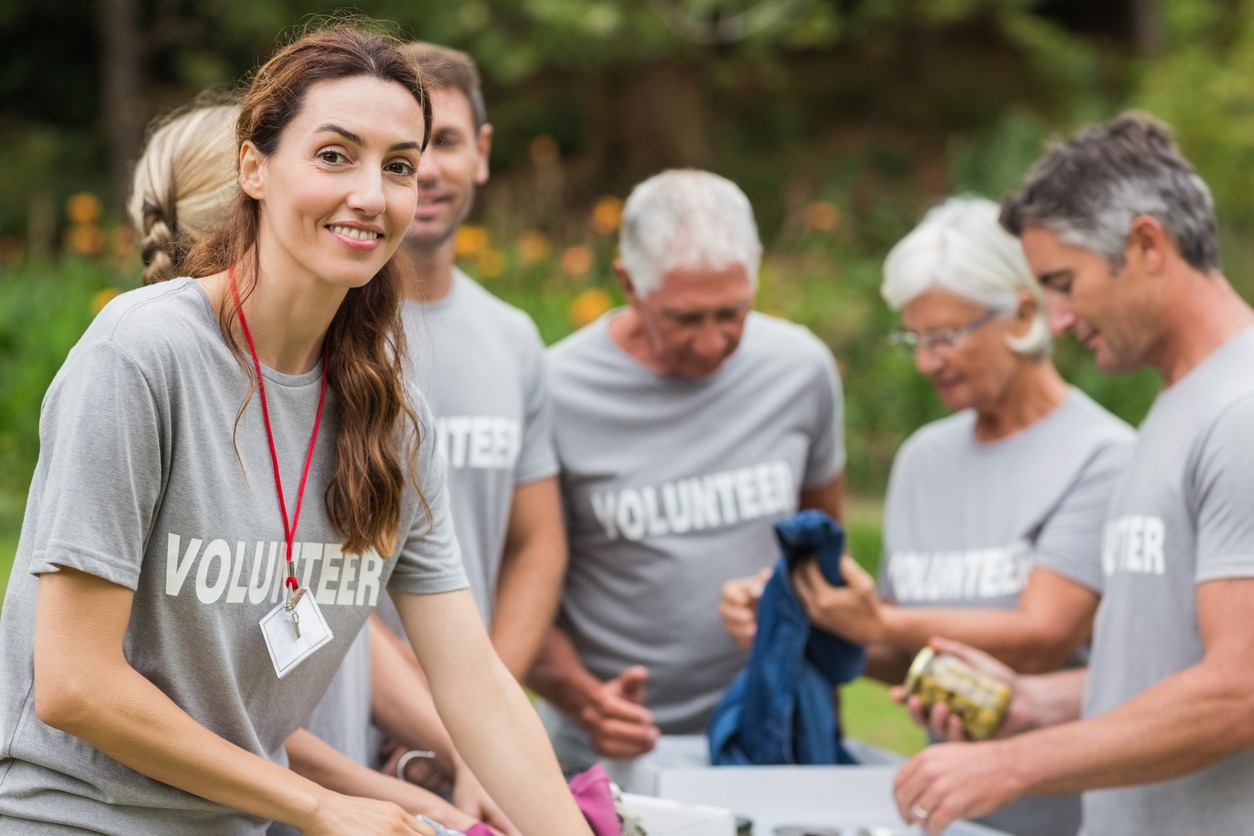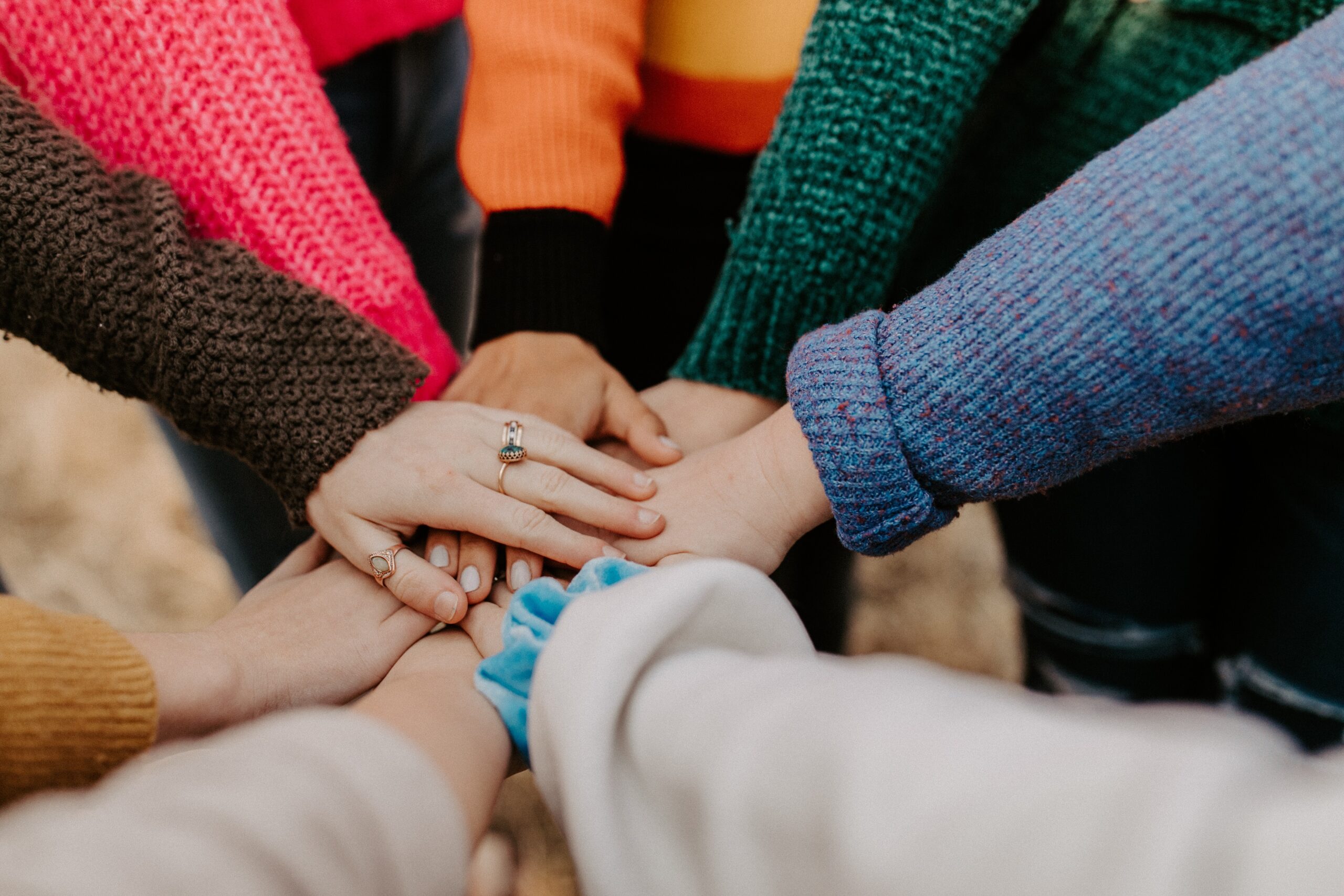Introduction
In a world often characterized by fast-paced living, personal ambitions, and individual pursuits, the act of giving back to one’s community stands as a profound testament to the enduring spirit of compassion and selflessness. It is a gesture that transcends personal gain and extends a helping hand to those in need.
The fulfillment derived from giving back to the community is a reward far more valuable than any material possession, for it enriches not only the lives of those we touch but also our own.
Giving back to the community is not just an act of kindness, it’s a journey of fulfillment and purpose. It’s about the profound satisfaction that comes from making a positive impact on the lives of others and the place we call home. In this brief exploration, we will delve into the heartwarming stories, the personal growth, and the shared sense of community that arise when individuals and groups dedicate their time and resources to support and uplift those around them. Join on a journey of self-discovery and collective betterment as we uncover the true fulfillment of giving back to the community.
The Essence of Community Service
In a world often marked by the pursuit of individual success and personal gain, the essence of community service serves as a powerful reminder of our shared humanity and interconnectedness. It is a testament to the enduring values of empathy, compassion, and altruism that define the best of human nature. At its core, community service represents a selfless commitment to the welfare of others and the collective well-being of a community. Its essence transcends mere charitable acts; it embodies a profound philosophy that enriches not only the recipients but also the givers themselves.
A Commitment to Altruism
Community service is a living expression of altruism, the noble act of helping others without the expectation of personal gain or recognition. It is driven by a genuine desire to alleviate the suffering of those in need and to contribute to the betterment of society. In a world often dominated by self-interest, community service stands as a shining example of the beauty of selflessness.
The Heart of Empathy and Compassion
At the heart of community service lies empathy and compassion. It is born from an understanding of the struggles, challenges, and dreams of others. Empathy forms the foundation upon which meaningful service is built, as it enables individuals to connect with the experiences of those they seek to assist. Compassion, in turn, fuels the drive to make a positive impact, driving volunteers to go the extra mile to uplift their communities.
A Tapestry of Social Responsibility
Affirming our civic responsibilities as neighborhood, city, or even global society members through community service is important. It recognizes that we are not isolated entities but part of an intricate social fabric. This recognition prompts us to take an active role in preserving and enhancing the common good.
Fostering Collective Well-Being
Community service emphasizes that individual well-being is inextricably linked to the well-being of the community. By working to improve the conditions and opportunities for others, volunteers enhance the overall quality of life in their community. This interconnectedness underscores the idea that we all thrive when we collectively uplift those in need.
The Power of Volunteerism and Active Engagement
Volunteerism is a cornerstone of community service, and it is defined by the willingness to give one’s time, energy, and skills voluntarily. Active participation is a hallmark of true service, often involving dedicated efforts that extend beyond the call of duty. Volunteers are driven by an intrinsic motivation to make a positive impact, demonstrating the power of collective action.
Catalyst for Grassroots Change
Community service is a catalyst for grassroots change. It tackles local issues and needs head-on, addressing them at their source. These initiatives often serve as building blocks for broader societal transformations, illustrating that even small, localized actions can have far-reaching effects.
Inclusivity and Diversity
The essence of community service is inherently inclusive. It welcomes individuals from diverse backgrounds, fostering unity and collaboration among people who may not otherwise interact. It recognizes the strength that comes from diversity and celebrates the common humanity that unites us all.
Education and Awareness
Community service serves as a vehicle for education and awareness. It shines a spotlight on societal challenges, raising consciousness about issues that require attention and action. Through service, individuals become informed advocates for change, working to address the root causes of problems.
A Legacy of Fulfillment and Connection
Perhaps most significantly, community service offers a profound sense of fulfillment. It connects individuals to something greater than themselves, providing a sense of purpose and accomplishment. The relationships formed through service are often deep and meaningful, creating a sense of belonging and connection within the community.
The essence of community service transcends mere acts of charity. It embodies a profound philosophy that underscores our shared humanity, emphasizing empathy, compassion, and social responsibility. Community service is a testament to the enduring power of selflessness, demonstrating that by working together to uplift those in need, we enrich not only the lives of others but also our own. It is a reminder that, as individuals, we possess the capacity to make a lasting impact and leave a legacy of compassion and caring for generations to come.
Historical Perspectives on Volunteering
Volunteering, as a noble and selfless act of contributing one’s time and efforts for the betterment of society, has a rich and diverse history deeply intertwined with the evolution of human civilization. From ancient cultures to modern societies, the act of volunteering has played a vital role in shaping communities and advancing the common good. Exploring historical perspectives on volunteering not only reveals its enduring significance but also highlights its capacity to inspire positive change across time and cultures.
Ancient Roots of Altruism
The roots of volunteering can be traced back to ancient civilizations. In Greece, the concept of “philanthropia” encompassed the idea of love for humanity and the willingness to help others. Ancient Romans, too, practiced volunteerism through various civic duties, including serving in the military and participating in public works projects.
Religious Traditions and Acts of Charity
Throughout history, religious institutions have been instrumental in promoting acts of charity and volunteering. In Christianity, the parable of the Good Samaritan serves as a timeless example of aiding others selflessly. In Islam, “zakat” represents the practice of giving to those in need as a religious duty. Across different faiths, volunteering and helping the less fortunate have been core tenets, shaping the moral fabric of societies.
Medieval Guilds and Mutual Aid Societies
During the Middle Ages in Europe, guilds and mutual aid societies emerged as significant precursors to modern volunteer organizations. These groups provided assistance to members and their communities in times of need, emphasizing the importance of collective responsibility.
The Renaissance and Humanitarian Movements
The Renaissance period saw a resurgence of interest in humanitarianism and philanthropy. Figures like Leonardo da Vinci, who provided services to society beyond their artistic talents, exemplified the spirit of volunteerism during this era. The Renaissance also marked the emergence of charitable organizations, such as hospitals and orphanages, run by volunteers who cared for the sick and destitute.
The Red Cross and the Birth of Modern Volunteerism
The 19th century witnessed the birth of modern volunteerism with the establishment of the International Committee of the Red Cross by Henry Dunant. Inspired by his experiences during the Battle of Solferino, Dunant’s efforts laid the foundation for humanitarian organizations that provide aid and support in times of conflict and disaster. The Red Cross exemplifies how volunteers can mobilize globally to address humanitarian crises.
Volunteering in Times of War and Crisis
Both World Wars saw an outpouring of volunteer efforts on various fronts. Women played pivotal roles as volunteers on the home front, contributing to war efforts by working in factories, supporting the military, and participating in civil defense. These historical instances underscore the adaptability and resilience of volunteerism in the face of adversity.
Civil Rights and Social Justice Movements
The Civil Rights Movement in the United States and similar movements worldwide showcased the transformative power of grassroots volunteerism in advancing social justice. Individuals like Rosa Parks and Martin Luther King Jr. mobilized communities through nonviolent protests and volunteer-driven campaigns, sparking significant societal change.
Contemporary Volunteering and Global Citizenship
In the modern era, volunteering has evolved to address a wide range of social, environmental, and humanitarian challenges. The internet and digital technology have facilitated global volunteer networks, enabling individuals to contribute to causes worldwide from their own homes. Contemporary volunteerism is marked by diversity, inclusivity, and a commitment to creating a more just and sustainable world.
Historical perspectives on volunteering reveal a continuum of selfless acts and collective efforts that have shaped societies and cultures across time. From the ancient roots of altruism to the modern era of global volunteer networks, the essence of volunteering remains constant: the unwavering commitment of individuals to contribute their time, talents, and resources for the betterment of humanity. As we reflect on the historical tapestry of volunteerism, we are reminded of its enduring significance and its capacity to inspire positive change in an ever-evolving world. It is a testament to the indomitable spirit of human compassion and the belief that together, we can create a brighter future for all.
The Personal Rewards of Volunteering
Gaining a Sense of Purpose and Fulfillment
In the pursuit of a meaningful and satisfying life, one of the most profound journeys is the quest to discover a sense of purpose and fulfillment. It is a journey that transcends the superficial trappings of success and delves deep into the core of human existence. While the path to finding purpose and fulfillment is unique to each individual, certain universal principles and practices can guide us on this transformative voyage.
1. Self-Reflection and Self-Discovery
The journey toward purpose and fulfillment often begins with introspection. Take the time to explore your values, interests, strengths, and passions. What activities bring you joy and a sense of flow? What causes or issues resonate with you on a deep level? Self-discovery is an ongoing process, and it involves listening to your inner voice and understanding what truly matters to you.
2. Setting Meaningful Goals
Purpose is often linked to setting meaningful and achievable goals. These goals should align with your values and aspirations. Whether they are related to your career, personal life, or community involvement, having clear objectives gives you a sense of direction and motivation to work towards something meaningful.
3. Service and Giving Back
Volunteering and acts of kindness can be powerful catalysts for finding purpose and fulfillment. When you engage in activities that benefit others, you often experience a profound sense of purpose. Giving back to your community or contributing to a cause you are passionate about can provide a deep sense of meaning and connection.
4. Cultivating Relationships
Human connection and relationships play a significant role in our sense of purpose and fulfillment. Nurturing meaningful relationships with family, friends, and community members can provide a strong support system and a sense of belonging. These connections can offer opportunities for shared experiences and personal growth.
5. Embracing Challenges and Growth
Challenges and setbacks are an inevitable part of life, but they can also be opportunities for growth and self-discovery. Embrace adversity as a chance to learn, adapt, and develop resilience. Overcoming obstacles can lead to a greater sense of accomplishment and purpose.
6. Living in Alignment with Values
Living a life in alignment with your core values is essential for finding purpose and fulfillment. When your actions and choices align with what you believe in, you experience a sense of integrity and authenticity. Reflect on your values and make conscious decisions that honor them.
7. Mindfulness and Gratitude
Practicing mindfulness and gratitude can help you appreciate the present moment and find contentment in what you have. Mindfulness techniques, such as meditation, can provide clarity and reduce stress, allowing you to focus on what truly matters.
8. Continuous Learning and Growth
Engaging in lifelong learning and personal development can contribute to your sense of fulfillment. Explore new interests, acquire new skills, and challenge yourself to step outside your comfort zone. The pursuit of knowledge and growth can be inherently rewarding.
9. Pursuing Passions and Hobbies
Engaging in hobbies and activities that bring you joy and enthusiasm can be a source of purpose and fulfillment. Whether it’s art, sports, music, or any other passion, these activities provide an outlet for self-expression and creativity.
10. Embracing a Balanced Life
Balance is key to maintaining a sense of purpose and fulfillment. Strive for a balanced life that includes time for work, relationships, self-care, and leisure. Avoid overcommitting or neglecting essential aspects of your well-being.
Gaining a sense of purpose and fulfillment is a lifelong journey that involves self-discovery, meaningful connections, service to others, and a commitment to living in alignment with your values. It is not a destination but a continuous process of growth and self-realization. By actively exploring these principles and practices, you can embark on a transformative voyage that leads to a more purposeful and fulfilling life.
Building Self-Esteem and Confidence
Self-esteem and confidence are the pillars of a healthy and fulfilling life. They determine how we perceive ourselves, how we interact with the world, and our ability to navigate challenges with resilience. It takes time, self-awareness, and purposeful action to cultivate and develop these abilities. Here are some vital steps to raise your confidence and sense of oneself:
1. Self-Acceptance
Begin by accepting yourself as you are, flaws and all. Recognize that nobody is perfect, and that our flaws are what make us special. Embrace your strengths and weaknesses alike.
2. Positivity in Oneself
Be mindful of your internal discourse. Positive affirmations should be used to replace negative ideas and self-criticism. Be kind and supportive to yourself, just as you would a friend.
3. Set Attainable Objectives
Establish challenging yet reachable goals for yourself. Accomplishing these goals will boost your self-esteem and confidence incrementally.
4. Honor Accomplishments
Whatever your accomplishments may seem to be, be proud of them. Recognizing your successes reinforces the belief in your capabilities.
5. Self-Care
Make self-care activities that are good for your body and mind a priority. Exercise regularly, eat well, get adequate sleep, and practice relaxation techniques like meditation or deep breathing.
6. Face Your Fears
Face your fears and leave your comfort zone. Each time you do, you prove to yourself that you can handle challenges and adversity.
7. Learn from Failure
It’s inevitable to fail in life. Instead of considering it a setback, consider it a chance for improvement. Analyze what went wrong, learn from your mistakes, and apply those lessons in the future.
8. Embrace the Supportive People in Your Life
Make sure you have supportive friends and family in your life Your confidence and self-esteem might increase as a result of healthy interactions.
9. Develop Skills
Identify areas where you want to improve and invest in learning new skills. Gaining competence in various aspects of life enhances your self-confidence.
10. Contest Your Negative Beliefs
Determine any limiting self-perceptions you might have and fight them. Are these beliefs based on facts or self-imposed limitations? Replace them with positive, empowering beliefs.
11. Apply Self-Compassion
Use the same empathy and understanding to treat yourself as you would others. Remember that making mistakes and facing challenges is a part of being human.
12. Visualization and Positive Imagery
Visualize achievement and employ uplifting imagery. See yourself achieving your goals and imagine the feeling of confidence that accompanies those achievements.
13. Seek Professional Help
If low self-esteem and confidence are significantly affecting your life, consider seeking support from a therapist or counselor. They can provide guidance and tools to address underlying issues.
14. Keep a Journal
Writing about your thoughts and feelings can provide clarity and help you track your progress. Use a journal to document your achievements, setbacks, and personal growth.
15. Embrace Failure as a Stepping Stone
Understand that even successful individuals faced failures on their journey. Failure is not a reflection of your worth but a stepping stone toward growth and success.
Remember that building self-esteem and confidence is an ongoing process. Be kind to yourself and acknowledge your progress. With dedication and self-compassion, you can gradually enhance your self-esteem and confidence, empowering yourself to live a more fulfilling life.
The Broader Impact on the Community
Improving Relationships Between Communities
In an increasingly interconnected world, the strength of our communities is a vital aspect of our well-being. Strong community bonds contribute to a sense of belonging, social support, and shared identity. They create a foundation for mutual assistance, resilience in the face of challenges, and a vibrant, cohesive society. Here are some essential steps to help strengthen community bonds:
Engage in Community Activities
Active participation in community events, gatherings, and activities can foster a sense of togetherness. Attend local festivals, join clubs or organizations, and volunteer for community projects to connect with your neighbors.
Open Communication
Establish open channels of communication within your community. Create social media groups, newsletters, or neighborhood forums where residents can share information, ideas, and concerns.
Support Local Businesses
Patronizing local businesses not only boosts the local economy but also promotes a sense of community. Getting to know local shop owners and employees can foster a stronger sense of connection.
Collaborative Projects
Undertake collaborative projects that address community needs and interests. Whether it’s a community garden, park cleanup, or charity drive, working together for a common goal builds bonds among residents.
Celebrate Diversity
Embrace the diversity within your community. Celebrate cultural festivals and traditions, and learn about the backgrounds and experiences of your neighbors. Respect and inclusivity are the cornerstones of strong community bonds.
Neighborhood Watch
Establish a neighborhood watch program to enhance safety and security. Collaborative efforts to maintain a safe environment can build trust and unity among residents.
Community Meetings
Regular community meetings provide a platform for residents to voice concerns, discuss ideas, and make decisions collectively. Encourage participation and ensure that everyone has a voice.
Shared Resources
Share resources within the community, such as tools, books, or even a communal garden. This promotes cooperation and interaction among neighbors.
Mentorship Programs
Implement mentorship programs that pair experienced community members with newcomers or youth. This promotes intergenerational bonding and the transfer of knowledge.
Support Local Schools
Active involvement in local schools strengthens ties between families and the educational community. Attend school events, support fundraisers, and consider volunteering your time or expertise.
Building and strengthening community bonds is an ongoing process that requires commitment, active participation, and a willingness to connect with your neighbors. These bonds not only enhance the quality of life within the community but also create a sense of belonging and mutual support that can positively impact individuals and society as a whole.
Addressing Local Needs and Challenges
Communities are the heart of our society, and their well-being hinges on the ability to address local needs and challenges effectively. Whether it’s improving education, enhancing infrastructure, or tackling social issues, local action is paramount. This short essay explores the importance of addressing local needs and challenges.
Understanding Local Context
Every community is unique, with its own set of needs and challenges. Understanding the local context is the first step in addressing them effectively. Whether it’s revitalizing a declining neighborhood or providing access to clean water in a rural area, local solutions are context-specific.
Empowerment and Ownership
Local initiatives empower community members to take ownership of their challenges and contribute to their solutions. When residents actively engage in addressing issues they face, they become stakeholders in the community’s development.
Building Resilience
Addressing local challenges builds resilience within the community. Whether it’s preparing for natural disasters or responding to economic shifts, communities that work together are better equipped to adapt and thrive.
Strengthening Social Bonds
Collaborative efforts to address local needs strengthen social bonds and foster a sense of belonging. When neighbors come together for a common cause, it creates a sense of unity and shared purpose.
Tailored Solutions
Local action allows for tailored solutions that address specific challenges effectively. What works in one community may not work in another, emphasizing the importance of localized approaches.
Nurturing Leadership
Local initiatives provide opportunities for emerging leaders to step forward. Individuals who take an active role in addressing community challenges often become the driving force behind positive change.
Long-Term Impact
Sustainable solutions often emerge from local engagement. By addressing root causes and involving community members, the impact of local initiatives can be lasting.
Ripple Effect
Successful local initiatives can inspire neighboring communities and create a ripple effect of positive change. When one community addresses a pressing issue effectively, it can serve as a model for others facing similar challenges.
Sense of Pride
Successfully addressing local needs and challenges fosters a sense of pride among community members. It reinforces the belief that the community can overcome obstacles and achieve its goals.
Addressing local needs and challenges is fundamental to the well-being and resilience of communities. It empowers residents, builds social bonds, and fosters a sense of ownership and pride. While national and global efforts are essential, the foundation of a prosperous society lies in the ability of communities to identify, understand, and address their unique needs and challenges.
Skills and Knowledge Acquisition
Learning Through Hands-On Experiences
Education is a lifelong journey, and while traditional classroom learning plays a crucial role, hands-on experiences provide a unique and valuable dimension to the process. Learning by doing, actively engaging with the world around us, and applying knowledge in real-life situations are essential aspects of a holistic education. Here’s why hands-on experiences are so vital for effective learning:
1. Active Engagement
Hands-on experiences demand active engagement. They require individuals to participate actively in the learning process, rather than passively absorbing information. This engagement promotes deeper understanding and retention of knowledge.
2. Real-World Application
Hands-on experiences bridge the gap between theory and practice. They allow learners to apply concepts and skills in real-life situations, helping them see the practical relevance of what they are learning.
3. Problem-Solving Skills
Engaging in hands-on activities often involves problem-solving. Whether it’s building a model, conducting experiments, or tackling a real-world issue, learners develop critical thinking and problem-solving skills that are invaluable throughout life.
4. Experiential Learning
Experiences are memorable. When individuals learn through hands-on activities, they create lasting memories associated with the knowledge gained. This experiential learning is often more vivid and impactful than rote memorization.
5. Skill Development
Many hands-on experiences involve the development of practical skills. Whether it’s woodworking, cooking, coding, or gardening, learners acquire skills that can be applied in various aspects of life.
6. Creativity and Innovation
Hands-on activities often encourage creativity and innovation. Learners are free to experiment, make mistakes, and come up with novel solutions, fostering a sense of curiosity and creativity.
7. Collaboration and Communication
Group projects and collaborative hands-on activities promote teamwork, communication, and interpersonal skills. These skills are essential not only in educational settings but also in professional and personal life.
8. Emotional Connection
Hands-on experiences can evoke strong emotions and create a sense of personal connection to the subject matter. This emotional connection can be a powerful motivator for continued learning.
9. Multi-Sensory Learning
Engaging multiple senses, such as touch, sight, and hearing, during hands-on experiences enhances learning. It caters to different learning styles, making education more inclusive and effective.
10. Confidence Building
Successfully completing hands-on projects and activities boosts self-confidence. Learners gain a sense of accomplishment, which can lead to greater motivation and a positive attitude toward learning.
11. Lifelong Learning
Hands-on experiences instill a love for lifelong learning. They promote curiosity and a desire to explore new topics and skills throughout life.
12. Practical Application
Ultimately, many professions and real-life situations require practical skills and the ability to apply knowledge. Hands-on experiences equip individuals with the competence to navigate these challenges effectively.
Incorporating hands-on learning into educational curricula, whether in schools, colleges, or informal settings, enhances the overall educational experience. It prepares individuals not only to excel academically but also to thrive in a complex and dynamic world where adaptability and practical skills are highly valued. Whether it’s science experiments, art projects, or real-world problem-solving, hands-on experiences are a cornerstone of effective and meaningful education.
Enhancing Professional and Personal Growth
People set out on a journey of personal development and growth in their pursuit of personal and professional development. This journey is marked by continuous learning, self-awareness, and intentional efforts to expand one’s knowledge, skills, and capabilities. Here are key strategies and principles for enhancing both professional and personal growth:
Lifelong Learning. Embrace the idea of lifelong learning. Whether through formal education, online courses, workshops, or self-directed study, actively seek opportunities to acquire new knowledge and skills throughout your life.
Set Clear Goals. Establish definite, attainable goals for your personal and professional lives. Setting goals provides direction and motivation, guiding your efforts toward growth and success.
Self-Reflection. Regularly reflect on your strengths, weaknesses, values, and aspirations. Self-awareness is the foundation of personal growth, as it helps you identify areas for improvement and align your actions with your values.
Seek Feedback. Solicit feedback from colleagues, mentors, friends, and family. Constructive feedback provides valuable insights into your performance and behavior, facilitating personal and professional growth.
Embrace Challenges. Don’t shy away from challenges or fear failure. Embracing challenges and learning from setbacks are essential for growth. Every obstacle presents an opportunity to learn and adapt.
Networking. Build and nurture professional and personal relationships. Networking opens doors to new opportunities, exposes you to diverse perspectives, and provides support in your growth journey.
Time Management. Effectively manage your time to prioritize tasks and activities that contribute to your growth. Eliminate distractions and focus on high-impact activities.
Skill Development. Identify key skills that are relevant to your professional field and personal interests. Invest time in developing these skills through practice and deliberate effort.
Health and Well-Being. Personal growth is closely linked to physical and mental well-being. Prioritize self-care, including exercise, a balanced diet, adequate sleep, and stress management.
Adaptability. Adaptability is essential in today’s environment of fast change. Be open to change, embrace new technologies, and stay current in your field to remain competitive and grow professionally.
Mindfulness and Reflection. Incorporate mindfulness practices and regular self-reflection into your routine. These practices promote self-awareness, emotional intelligence, and personal growth.
Seek Mentorship. Find mentors or coaches who can provide guidance, share their experiences, and offer valuable insights. Mentorship accelerates both personal and professional development.
Give Back. Contributing to the well-being of others through volunteer work or mentorship can be a fulfilling aspect of personal growth. It cultivates empathy, leadership skills, and a sense of purpose.
Positive Mindset. Develop an optimistic, growth-oriented mindset. Believe in your ability to learn and adapt, and maintain a constructive outlook on challenges and setbacks.
Continuous Evaluation. Periodically assess your progress toward your goals. Adjust your strategies and priorities as needed to stay on the path of growth.
Enhancing both professional and personal growth is an ongoing journey that requires dedication and self-discipline. You can establish a healthy and meaningful life marked by constant growth and advancement by accepting lifelong learning, asking for criticism, defining clear goals, and giving well-being first priority. Remember that personal and professional growth is not a destination but a rewarding journey of self-discovery and self-improvement.
Fostering Global Understanding
Volunteering in Diverse Settings
Volunteering is a powerful and transformative act that transcends boundaries and brings people together. What makes it even more enriching is the opportunity to volunteer in diverse settings. Whether in your local community or on a global scale, the experience of volunteering in various contexts offers valuable lessons and a deeper understanding of the world.
Local Community Volunteering
Volunteering within your local community allows you to directly address the needs and challenges that your neighbors and fellow community members face. It’s a chance to make an immediate and tangible impact, from helping at a local food bank to participating in neighborhood clean-up initiatives. These experiences foster a sense of connectedness and belonging, as you witness the positive changes your efforts bring to your community.
National and Regional Volunteering
Extending your volunteering efforts beyond your immediate community allows you to appreciate the diversity and complexity of your nation or region. You might engage in disaster relief efforts, contribute to environmental conservation projects, or support education initiatives in underserved regions. These experiences broaden your perspective, deepen your empathy, and demonstrate the interconnectedness of communities on a larger scale.
International Volunteering
Venturing into international volunteering settings takes you into entirely different cultural contexts and societies. Whether you’re involved in healthcare missions, education programs, or sustainable development projects in foreign countries, you learn to navigate cultural nuances, adapt to unfamiliar environments, and appreciate the richness of global diversity. International volunteering exposes you to the broader human experience, fostering a global perspective and a sense of global citizenship.
Online Volunteering
In the digital age, online volunteering opportunities are becoming increasingly accessible. You can contribute your skills and expertise to causes and organizations worldwide without leaving your home. Online volunteering demonstrates the power of technology to connect people from diverse backgrounds, transcending geographical limitations.
Cross-Cultural Understanding
Volunteering in diverse settings promotes cross-cultural understanding and tolerance. It challenges stereotypes and biases, allowing you to appreciate the shared humanity that unites people from different backgrounds.
Skill Development
Each volunteering experience, regardless of the setting, offers opportunities for skill development. Whether it’s leadership, communication, problem-solving, or project management, volunteering allows you to refine and expand your skill set, enhancing your personal and professional growth.
A Sense of Purpose
Volunteering in diverse settings provides a profound sense of purpose. It reminds us that, as individuals, we can make a difference in the lives of others, regardless of where they come from or their circumstances. This sense of purpose enriches our own lives and drives us to continue contributing to the betterment of the world.
Volunteering in diverse settings is a transformative journey that exposes us to the complexity and beauty of the human experience. It enriches our lives by fostering empathy, expanding our horizons, and instilling a sense of purpose. Each volunteering experience, whether local or global, close or far, is a monument to the strength of group effort and the possibility for good change in our linked world.
Building Bridges Across Cultures
In an increasingly interconnected world, the ability to build bridges across cultures is not only a valuable skill but a necessity. Cultures are rich tapestries of traditions, beliefs, and values that shape the identities of individuals and communities. To promote understanding, cooperation, and unity among diverse cultures, we must embrace the following principles:
Cultural Humility. Approach interactions with humility, recognizing that there is always more to learn about other cultures. Acknowledge that your perspective is not the only valid one, and be open to understanding different worldviews.
Active Listening. Engage in active listening when interacting with people from different cultures. Be aware in their verbal and nonverbal signs.Instead of assuming what somebody might think, try to comprehend their viewpoints.
Empathy. By placing oneself in others’ shoes, you can develop empathy. Try to recognize the emotions, experiences, and demanding situations that people from one of a kind cultures face. Empathy fosters connections and bridges gaps.
Open-Mindedness. Be open-minded when dealing with cultural differences. Be open to fresh concepts and methods of operation. Avoid judgment and be willing to adapt your own perspective when appropriate.
Cultural Competence. Invest time in building cultural competence. Educate yourself about different cultures, their histories, traditions, and values. This knowledge equips you to navigate cultural differences respectfully.
Language and Communication. Learn approximately the language and verbal exchange forms of different cultures. Language is a powerful tool for building bridges and showing respect for different cultures.
Seek Common Ground. Focus on commonalities and shared values. Identify areas of overlap and mutual interest, which can serve as foundations for understanding and collaboration.
Celebrate Diversity. Celebrate cultural range as a supply of energy and enrichment. Encourage cultural exchange and appreciate the contributions that various cultures make to our global community.
Avoid Stereotypes. Avoid and challenge preconceptions. Recognize that individuals within a culture can have diverse perspectives and experiences. Treat each person as an individual, not as a representative of their culture.
Ask Questions. If you are unsure about a cultural practice or belief, ask respectful and non-intrusive questions to gain insight and clarity. Most people appreciate genuine curiosity and a willingness to learn.
Participate in Cross-Cultural Encounters. Actively participate in cross-cultural experiences, such as cultural festivals, international travel, or cultural exchange programs. These experiences immerse you in different cultures and promote understanding.
Promote Inclusivity. Advocate for inclusivity and diversity in your workplace, community, and society at large. Support policies and initiatives that foster inclusivity and equal opportunities for all.
Be Patient. Building bridges across cultures can take time. Be patient and persistent in your efforts to foster understanding and unity.
Conflict Resolution. When conflicts arise due to cultural differences, approach them with sensitivity and a willingness to find mutually acceptable solutions. Seek the assistance of mediators or cultural experts when needed.
Lead by Example. In your relationships with others, set an example of respect and inclusivity. Your actions can inspire those around you to embrace cultural diversity and build bridges.
In our globalized world, building bridges across cultures is not only a personal endeavor but a collective responsibility. By fostering understanding, empathy, and unity among diverse cultures, we contribute to a more harmonious and inclusive society where the richness of human diversity is celebrated and valued.
Overcoming Challenges in Volunteering
Navigating Logistical and Cultural Barriers
In today’s interconnected world, navigating both logistical and cultural barriers has become an essential skill, particularly in the realm of business, international relations, and global collaborations. These barriers can present significant challenges, but with the right approach, they can be transformed into opportunities for growth and understanding.
Logistical Barriers
Logistical barriers encompass a range of challenges related to operations, technology, and infrastructure. They often include issues such as time zones, language differences, and distance. Here’s how to navigate them effectively:
1. Effective Communication: Clear and efficient communication is vital. Use tools like video conferencing, project management software, and translation services to bridge language gaps and facilitate collaboration across time zones.
2. Time Management: Adapting to different time zones requires careful planning. Use scheduling tools to find overlapping working hours and set expectations for response times.
3. Cultural Awareness: Recognize that cultural differences can impact work styles and timelines. Be flexible and accommodating, and establish shared goals and expectations to ensure everyone is on the same page.
4. Technology Solutions: Leverage technology to overcome logistical barriers. Tools like virtual reality can facilitate virtual face-to-face meetings, making collaboration feel more personal despite physical distances.
5. Project Management: Implement robust project management practices to ensure tasks are assigned, deadlines are met, and progress is tracked efficiently. This helps teams stay organized and on track.
Cultural Barriers
Cultural barriers encompass differences in norms, values, beliefs, and communication styles. Here’s how to navigate them effectively:
1. Cultural Sensitivity: Develop cultural sensitivity by learning about the cultural backgrounds of your colleagues or collaborators. Recognize the importance of manners, traditions, and gestures.
2. Active Listening: When working across cultures, active listening is crucial. Pay attention not only to words but also to non-verbal cues and emotional expressions, as they can convey important messages.
3. Cross-Cultural Training: Consider providing cross-cultural training for team members to increase awareness and build cultural competence. This can lead to more effective cross-cultural communication and collaboration.
4. Flexibility and Adaptation: Be open to adapting your communication and work style to accommodate cultural differences. Flexibility is key to finding common ground and building rapport.
5. Collaboration and Relationship Building: Invest time in building relationships with colleagues from different cultures. Personal connections and trust are often the foundation of successful cross-cultural collaborations.
6. Conflict Resolution: When cultural misunderstandings or conflicts arise, approach them with patience and a desire to find common ground. Seek the assistance of cultural experts or mediators when needed.
7. Inclusive Leadership: Leaders play a crucial role in fostering an inclusive and culturally diverse environment. Lead by example, promote diversity and inclusion, and create a culture of respect and understanding.
Navigating logistical and cultural barriers is not only about overcoming challenges but also about seizing opportunities for growth, innovation, and enriching collaborations. By emphasizing effective communication, cultural awareness, flexibility, and inclusivity, individuals and organizations can transform barriers into bridges, fostering more harmonious and successful interactions in our globalized world.
Ensuring Sustainable and Meaningful Impact
In the pursuit of making a positive difference in the world, whether through philanthropy, social entrepreneurship, or community engagement, ensuring sustainable and meaningful impact is paramount. Here are key principles to guide individuals and organizations in their efforts to create lasting, positive change:
1. Define Clear Objectives: Begin with a clear and well-defined mission and objectives. What specific issue or problem do you aim to address? Clarity of purpose is essential for focusing efforts and measuring impact.
2. Research and Data: Conduct thorough research to understand the issue at hand. Collect data and assess the root causes, demographics, and existing interventions. Informed decision-making is key to impactful solutions.
3. Collaborative Approach: Collaboration and partnerships with stakeholders, including affected communities, government agencies, NGOs, and experts, can enhance the effectiveness and sustainability of your efforts. Working together leverages collective expertise and resources.
4. Tailored Solutions: Recognize that one-size-fits-all solutions may not be effective. Tailor your approach to the specific needs and context of the community or issue you’re addressing. Local knowledge and involvement are invaluable.
5. Long-Term Commitment: Sustainable impact often requires a long-term commitment. Be prepared for extended engagement and continuous support. Meaningful change may not be immediate but builds over time.
6. Monitoring and Evaluation: Establish clear metrics and systems for monitoring and evaluating the progress of your initiatives. Regularly assess the impact of your efforts and make adjustments based on evidence and feedback.
7. Empowerment and Capacity Building: Empower individuals and communities by involving them in the decision-making process and building their capacity to address their own challenges. Sustainable solutions should be community-driven.
8. Transparency and Accountability: Maintain transparency in all aspects of your work, from finances to decision-making processes. Be accountable to your stakeholders and donors. Transparency builds trust.
9. Learn from Failures: Understand that not all efforts will succeed, and failures can offer valuable lessons. Embrace a culture of learning from both successes and setbacks, adapting your approach as needed.
10. Ethical Considerations: Consider the ethical implications of your work. Ensure that your actions respect human rights, cultural sensitivity, and environmental sustainability.
11. Impact Measurement: Focus on outcomes rather than outputs. Measure the real, tangible changes your initiatives bring about in the lives of individuals and communities. Impact should be meaningful and positive.
12. Adaptability: Be adaptable and open to adjusting your strategies based on changing circumstances or new insights. Rigidity can hinder long-term impact.
13. Public Awareness and Advocacy: Raise awareness about the issues you’re addressing and advocate for policy changes when necessary. Public support and advocacy can amplify your impact.
14. Financial Sustainability: Ensure the financial sustainability of your initiatives. Diversify funding sources, explore income-generating activities, and consider long-term financial planning.
15. Storytelling: Share stories and testimonials that illustrate the impact of your work. Stories humanize the statistics and connect donors and supporters emotionally to your cause.
Ensuring sustainable and meaningful impact is a complex but deeply rewarding endeavor. By adhering to these principles and committing to continuous learning and improvement, individuals and organizations can maximize their effectiveness and leave a lasting, positive mark on the world. Ultimately, it is the persistence, dedication, and ethical commitment to making a difference that define truly impactful initiatives.
Stories of Transformation
Personal Narrative: A Journey of Change through Volunteering
“For many years, I lived a comfortable life, immersed in my daily routines and responsibilities. However, I always felt a longing for something more meaningful, a sense of purpose that seemed elusive. It wasn’t until I embarked on a volunteering journey that I began to experience profound change and fulfillment.”
“My first volunteer opportunity was at a local homeless shelter. Walking in on that crisp autumn morning, I was filled with a mix of excitement and apprehension. I didn’t know what to expect, but I was determined to step out of my comfort zone. Little did I know that this decision would alter the course of my life.”
“As I entered the shelter, I was met with a diverse group of people, each with their unique stories and struggles. Initially, I was taken aback by the stark reality of homelessness. However, it didn’t take long for me to see past the surface and recognize the shared humanity that connected us all. I began by serving meals and offering a friendly smile, but as the weeks went by, my role evolved.”
“What struck me most was the resilience and gratitude of the individuals I met. They taught me valuable lessons about perseverance, gratitude, and the power of human connection. I found myself engaging in conversations, listening to their stories, and providing a listening ear. In return, I received smiles, expressions of gratitude, and the warm feeling of making a difference, even if it was one small act at a time.”
“My volunteering journey didn’t stop at the shelter. I explored various opportunities, from tutoring underserved students to participating in environmental conservation projects. Each experience brought new challenges, new friends, and new perspectives. I found myself more connected to my community and the world around me than ever before.”
“Over time, I realized that volunteering had ignited a transformation within me. It was a journey of self-discovery, empathy, and a deep sense of purpose. I had learned that the most meaningful change often begins with small actions and a genuine desire to help others. My perspective on life had shifted, and my priorities had realigned.”
“Volunteering became an integral part of my life, not an obligation but a source of joy and fulfillment. It wasn’t just about giving; it was about receiving in ways I could never have imagined. It was about the connections I forged, the lives I touched, and the impact I made, both on others and on myself.”
“Through volunteering, I found my sense of purpose and a newfound appreciation for the power of collective action. I learned that change begins with individuals who are willing to step forward and make a difference, no matter how small. It’s a journey that continues to shape my life, reminding me that the most significant transformations often occur within us when we open our hearts to serve others.”
The Ripple Effect in Communities: How Small Actions Create Big Change
In the intricate tapestry of community life, the ripple effect is a powerful force that can spark transformative change. Just as a single pebble dropped into a pond creates expanding ripples, small actions and initiatives can reverberate through communities, leaving a lasting impact. Here’s how the ripple effect works and why it’s so vital:
Catalyst for Change
Small acts of kindness, volunteer efforts, or community initiatives often serve as catalysts for change. These actions inspire others to join in and make a positive difference.
Awareness and Inspiration
When one person takes the initiative to address a local issue or need, it raises awareness within the community. Others become inspired to get involved, creating a ripple effect of engagement and action.
Multiplying Impact
The ripple effect multiplies the impact of individual actions. As more people join in, the cumulative effect can be substantial. What started as a single act of kindness can grow into a community-wide movement.
Social Norms and Behavior Change
When positive actions become the norm within a community, they can lead to lasting behavior change. Acts of generosity, environmental stewardship, and civic engagement can become ingrained in community culture.
Support Networks
The ripple effect builds support networks. Individuals and groups who come together to address common issues create a sense of belonging and solidarity. This support encourages sustained efforts.
Fostering Leadership
Small actions can foster leadership within a community. Those who take the initiative often inspire others to step into leadership roles, creating a self-renewing cycle of community leadership.
Learning and Growth
As community members engage in initiatives, they learn new skills, gain experiences, and develop a deeper understanding of the issues they are addressing. This learning fosters personal and collective growth.
Replicating Success
Successful initiatives often serve as models for others to replicate in different contexts. When one neighborhood improves its parks or reduces littering, neighboring communities may follow suit.
Long-Term Change
The ripple effect can lead to sustained, long-term change within a community. Over time, small actions become ingrained in community practices and contribute to overall well-being.
Encouraging Innovation
The ripple effect encourages innovation. Communities that see the positive impact of small actions are more likely to embrace new ideas and approaches to address evolving challenges.
Bridging Divides
Positive actions and initiatives can bridge divides within a community. They bring together individuals from diverse backgrounds, fostering unity and collaboration.
Emotional Well-Being
Being part of a community where positive actions are the norm can contribute to the emotional well-being of residents. It creates a sense of pride and fulfillment.
Collective Identity
The ripple effect reinforces a sense of collective identity. Communities that come together to make positive changes develop a shared identity based on their values and aspirations.
The ripple effect is a testament to the power of individual and collective agency in creating meaningful change. It demonstrates that even seemingly small actions can have a far-reaching impact, shaping the culture, well-being, and future of communities. By embracing the ripple effect, communities can harness this force for positive transformation, one small action at a time.
Conclusion
The fulfillment of giving back to the community is a profound journey that not only enriches the lives of individuals but also strengthens the bonds that unite us as a society. It is through acts of generosity, compassion, and service that we find purpose, create positive change, and build a brighter future for all.








